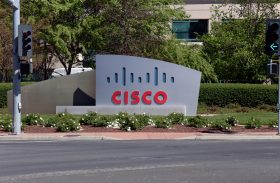Barefoot, Netronome Shows Move to Edge Analytics

As more network processing moves from the core to edge a battle for control of the future of networking is playing out in the form of partnerships intended to marginalize incumbent vendors.
This week Barefoot Networks and Netronome extended their alliance to combine a Wedge 100BF switch based on the Tofino ASIC processors developed by Barefoot Networks and the network integration cards (NICs) created by Netronome to provide greater real time visibility into packets as they travel across an extended enterprise network.
As more network processing moves to the edge, the relationship between NICs and physical switches is changing, says Ron Renwick, senior director of product marketing for Netronome. More virtual switching functions are being processed on servers and the NIC cards attached to them. The alliance between Netronome and Barefoot Network provides greater visibility into the network packets processed on the server via integration between Netronome NICs and Barefoot Deep Insight, which applies Big Data analytics to real-time packet monitoring.
“This means that when it comes to packet processing the server is no longer a black box on the network,” says Renwick.
The extension of the alliance between Netronome and Barefoot Networks comes at a time when the Tofino processor is gaining traction. Both Neronome and Barefoot Networks are supporters of the P4 programming language that is emerging as a standard for developing programmable networking software and services. This week Barefoot Networks announced that the Open Compute Project’s (OCP) Software for Open Networking in the Cloud (SONiC) is now available on several Barefoot Tofino-based bare metal switching platforms. Barefoot Networks is also touting recent customer wins involving Alibaba Group (BAB), Baidu, and Tencent Holding, all of which provide cloud services in China.
Renwick says it’s now more a matter of when and how much network processing will move to the edge will move to the edge. That creates a significant challenge for incumbent switch providers that have a vested interest in processing as many packets at the core as possible, says Renwick.
In terms of how much network processing will move to the edge from the core the overall dynamics are still fluid. But as IT organizations continue to rely on one form of virtual switching or another running on the server level, the amount of intelligence that can be surfaced via the NICs attached to those servers becomes more significant with each passing day.












